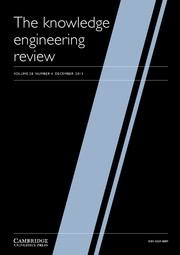Article contents
Critical note—artificial intelligence and legal reasoning*
Published online by Cambridge University Press: 07 July 2009
Extract
Solving a legal problem is a complex business. First, the lawyer—or whoever is doing the solving—has to assemble and marshall the facts of his case in as orderly a fashion as his knowledge of the relevant law will allow. Secondly, he must confront the range of pertinent legal sources and decompose these into manageable and applicable units. Thirdly, he will subsume the particular facts of his case under the more general terms of his decomposed units. And, finally, he draws inferences about the applicable legal provisions and their impact on the facts. Of course, assembly, decomposition, subsumption and inference may not occur in linear progression. What is more, problems can cccur at each stage and interim evaluations and judgments must be made.
Information
- Type
- Area Surveys
- Information
- Copyright
- Copyright © Cambridge University Press 1987
References
* Book review. Anne von der Leith Gardner, An Artificial Intelligence Approach to Legal Reasoning, A Bradford Book, The MIT Press, London, 1987.
- 1
- Cited by

